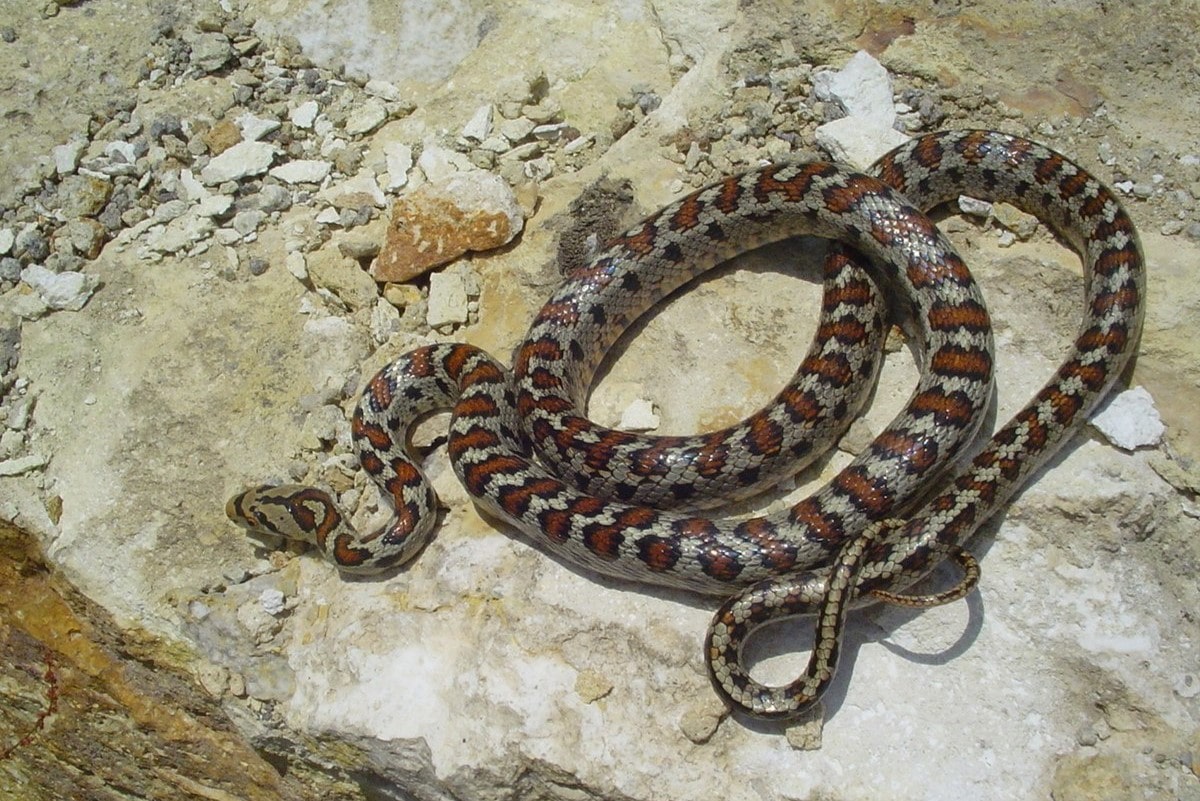
Leopard snakes are fascinating creatures that captivate the imagination with their striking appearance and unique characteristics. Belonging to the colubrid family, these non-venomous snakes are found in various parts of the world, including Europe, Asia, and North America. They are known for their beautiful patterns, resembling those of a leopard, which provide them with excellent camouflage in their natural habitats.
In this article, we will delve into the intriguing world of leopard snakes and uncover 12 fascinating facts about these captivating reptiles. From their habitat and behavior to their diet and reproduction, we will explore various aspects of their lives that make them such interesting creatures.
So, without further ado, let’s embark on a journey of discovery and unveil the mysteries surrounding the enigmatic leopard snake.
Key Takeaways:
- Leopard Snakes are non-venomous, beautiful climbers, and active during the day. They play a crucial role in maintaining ecosystem balance by controlling populations of small mammals, birds, and reptiles.
- Leopard Snakes are popular pets due to their striking markings and docile nature. They lay eggs, shed their skin, and are essential for the ecological balance of their habitats.
The Leopard Snake is a member of the Colubridae family.
The Leopard Snake, scientifically known as Elaphe situla, belongs to the Colubridae family, which is the largest family of snakes comprising over two-thirds of all known snake species.
Leopard Snakes are native to Southeast Europe and parts of Western Asia.
These fascinating snakes are primarily found in regions such as the Balkans, Italy, Slovenia, Croatia, Greece, and Turkey, where they thrive in a variety of habitats ranging from forests to grasslands.
They are known for their striking leopard-like markings.
As their name suggests, Leopard Snakes have a unique pattern resembling the spots of a leopard, with a series of dark brown or black irregular spots on a light yellow or beige background, making them quite a sight to behold.
Leopard Snakes are non-venomous.
Unlike some of their venomous counterparts, Leopard Snakes are harmless to humans. They rely on constriction to subdue their prey, squeezing it until it can no longer breathe.
These snakes are excellent climbers.
Leopard Snakes possess strong muscular bodies and are proficient climbers, allowing them to ascend trees and navigate through branches with ease. This skill helps them in hunting and escaping predators.
Leopard Snakes are primarily active during the day.
They are diurnal snakes, which means they are most active during daylight hours. This behavior allows them to bask in the sun to regulate their body temperature and maximize their hunting opportunities.
They have a diverse diet.
Leopard Snakes are opportunistic feeders and have a varied diet, consisting of small mammals, birds, lizards, and even amphibians. Their hunting technique involves ambushing their prey and overpowering it quickly.
Leopard Snakes are oviparous.
These snakes reproduce by laying eggs rather than giving live birth. The female Leopard Snake typically lays a clutch of around 6-20 eggs, which are then incubated for a period of several weeks before hatching.
They are known for their defensive behaviors.
When threatened, Leopard Snakes may exhibit defensive behaviors such as flattening their bodies, hissing, and vibrating their tails. However, they rarely bite and prefer to escape rather than confront potential predators.
Leopard Snakes are popular choices in the pet trade.
Due to their beautiful markings and relatively docile nature, Leopard Snakes are sought after as pets by reptile enthusiasts. However, it is crucial for potential owners to research their care requirements thoroughly and ensure legal acquisition.
They undergo a process called ecdysis.
Like all snakes, Leopard Snakes periodically shed their outer layer of skin in a process called ecdysis. This allows them to grow and rid themselves of any parasites or damaged skin.
Leopard Snakes play a vital role in maintaining ecosystem balance.
As predators, Leopard Snakes help control populations of small mammals, birds, and reptiles, contributing to the ecological balance of their habitats and preventing overpopulation of certain species.
The Leopard Snake, with its enchanting leopard-like markings and fascinating behaviors, is undoubtedly one of nature’s captivating wonders. By understanding and appreciating these 12 intriguing facts about the Leopard Snake, we can develop a deeper appreciation for these incredible creatures and their importance in the natural world.
Conclusion
The Leopard Snake is a fascinating creature with an array of unique characteristics and behaviors. From its distinct appearance to its interesting hunting techniques, this snake attracts the attention of wildlife enthusiasts and researchers alike. With its ability to adapt to various environments and its crucial role in maintaining ecosystem balance, the Leopard Snake holds great importance in the animal kingdom.
Understanding the remarkable traits of the Leopard Snake not only deepens our knowledge of wildlife, but also encourages us to appreciate the beauty and complexity of the natural world. As efforts continue to conserve these incredible creatures, further exploration and research will unveil even more intriguing facts about the Leopard Snake.
FAQs
Q: What is the size of a Leopard Snake?
A: Leopard Snakes can vary in size, with the average length ranging from 2 to 4 feet.
Q: Where are Leopard Snakes found?
A: Leopard Snakes are primarily found in the southeastern regions of the United States.
Q: What do Leopard Snakes eat?
A: Leopard Snakes feed on a diet mainly consisting of small mammals, such as mice and voles.
Q: Are Leopard Snakes venomous?
A: No, Leopard Snakes are not venomous. They rely on constriction to subdue their prey.
Q: How do Leopard Snakes defend themselves?
A: When threatened, Leopard Snakes may hiss, vibrate their tails, or release a foul-smelling odor as a defense mechanism.
Q: Do Leopard Snakes hibernate?
A: Yes, Leopard Snakes undergo a period of hibernation during the colder months to conserve energy.
Q: How long do Leopard Snakes live?
A: Leopard Snakes have an average lifespan of around 10 to 15 years in the wild.
Q: Do Leopard Snakes lay eggs?
A: Yes, Leopard Snakes are oviparous, meaning they lay eggs rather than giving birth to live young.
Q: Can Leopard Snakes swim?
A: Yes, Leopard Snakes are adept swimmers and can navigate through water with ease.
Q: Are Leopard Snakes aggressive towards humans?
A: No, Leopard Snakes are generally shy and prefer to avoid human encounters. They are not typically aggressive unless provoked.
Q: How can I identify a Leopard Snake?
A: Leopard Snakes have a distinct yellowish-brown body with dark spots or blotches, resembling the pattern of a leopard.
Q: Are Leopard Snakes endangered?
A: Currently, Leopard Snakes are not considered endangered. However, habitat destruction and urbanization pose threats to their populations.
Leopard snakes are fascinating creatures, but there's so much more to explore in the world of wildlife and reptiles. Discover how you can make a difference through wildlife conservation, learn mind-blowing facts about reptiles, and dive into the captivating world of another incredible snake species, the steppe viper. Each topic offers a unique glimpse into the wonders of nature, from the importance of preserving habitats to the astonishing adaptations of scaly creatures. Embark on a journey of discovery and uncover the secrets of the animal kingdom, one fascinating fact at a time.
Was this page helpful?
Our commitment to delivering trustworthy and engaging content is at the heart of what we do. Each fact on our site is contributed by real users like you, bringing a wealth of diverse insights and information. To ensure the highest standards of accuracy and reliability, our dedicated editors meticulously review each submission. This process guarantees that the facts we share are not only fascinating but also credible. Trust in our commitment to quality and authenticity as you explore and learn with us.


